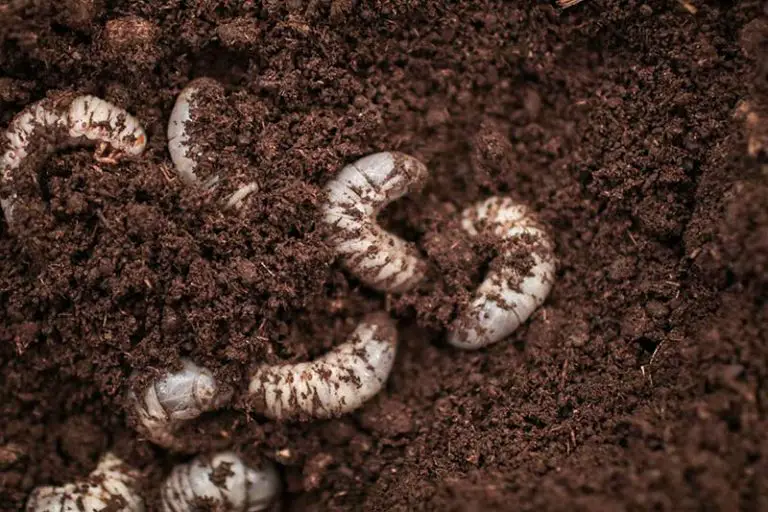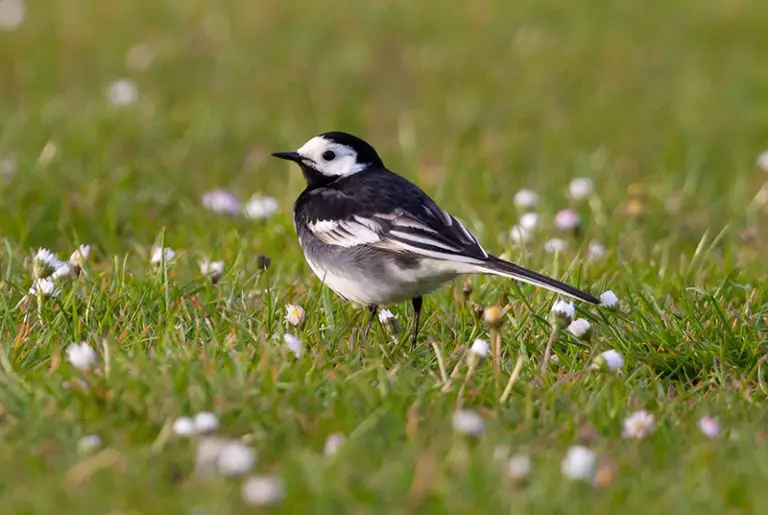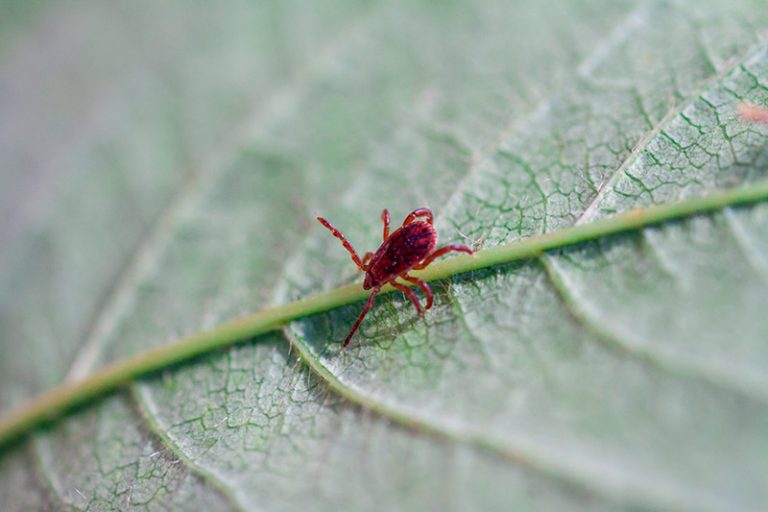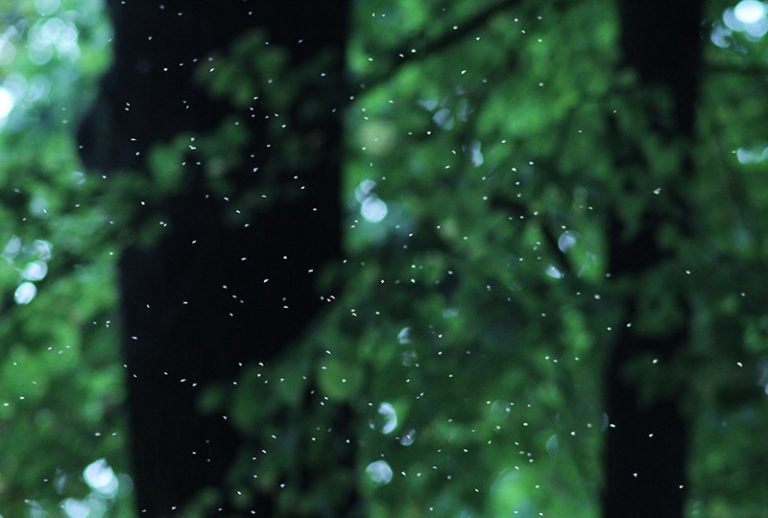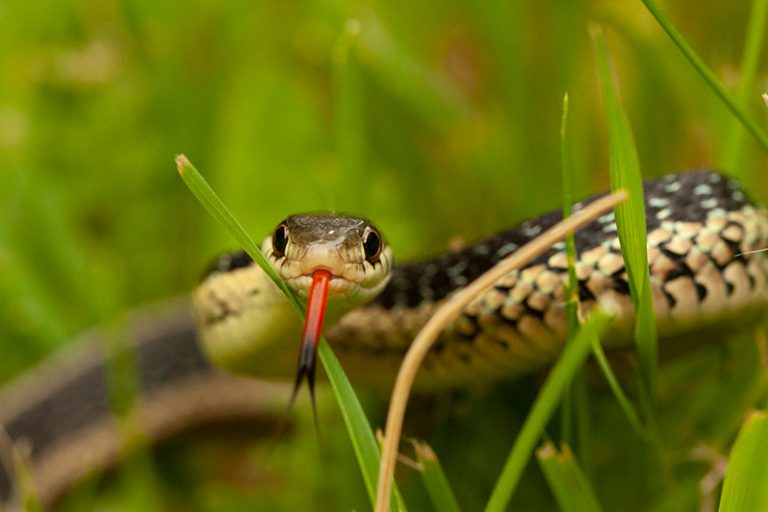Get Rid of Ants in Yard
Ants play a key role in our ecosystem by aerating soil, pollinating seeds, and preying on other less desirable pests such as termites and ticks. However, where there are ants, there are anthills – the homes of these tiny creatures become large, unsightly tripping hazards throughout your lawn if they are allowed to go about their business undisturbed.
In this guide, we have gone through several different methods you can try in order to get rid of ants in your yard and to prevent them from returning for good. We have included some effective chemical solutions, in addition to a range of environmentally-friendly natural solutions that will be safer for homes with pets and children.
Why You Should Get Rid of Ants in Yard
Anthills Damage Grass
The main issues with ants are the nests and anthills that they build. When an ant colony settles in your yard, they settle in huge numbers and get to work building intricate and extensive structures in your soil to become their nest. Aside from making unsightly mounds of dirt all throughout your lawn, this can damage the root structure of your grass, which may cause yellowing or dead patches to form. Furthermore, these anthills can become quite large, creating a tripping hazard for anyone who uses the lawn, and making mowing more of a challenging task.
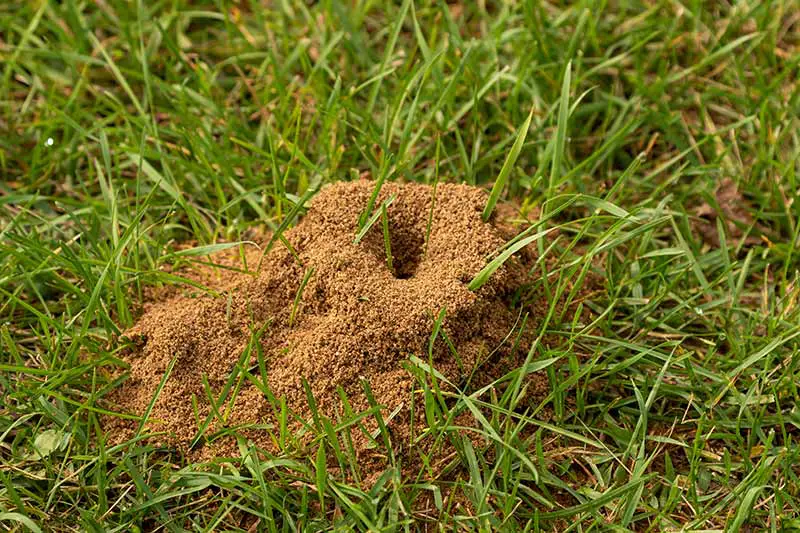
Ants Encourage Other Pests
Many species of ants will do something known as ‘ranching’, which is when they protect and encourage the abundance of other species of insects such as aphids and mealybugs. Aphids and mealybugs secrete honeydew, which is a substance that ants love. In order for the ants to keep a local source of this delicacy, they will protect the aphids and mealybugs and assist them in their daily needs. These pests will feast on any other vegetables and ornamental plants you may have in your yard if they are allowed to take it over. If you also have an infestation of aphids or mealybugs, then getting rid of ants is a good first step to solving that problem too.
Some species of ants, e.g. fire ants, prey on other undesirable pests in your yard such as termites, ticks, and chiggers. Follow our guide on How to Get Rid of Chiggers if you notice an increase in these pests after you get rid of the ants.
How to Get Rid of Ants and Prevent Recurring Infestations
If you’re currently trying to combat an ant infestation in your yard, chances are that you’ve already tried to take measures that may have temporarily staved off the ants, only to find that they’ve returned in full force shortly after. The reason behind why this happens is that you need to eliminate the ants at their source, that being their nest, otherwise they will keep multiplying and will continue to wreak havoc on your lawn. Even if it seems like you’ve quashed the majority of the ants that you can see roaming around in your yard, the queen ant will be busy in the nest laying thousands of new eggs each day until the colony has been restored again. The key is to target the source of the ants to destroy the queen and stop them from returning once and for all.
Some tips to prevent ants in your yard:
- Mow your lawn regularly, and keep shrubbery and trees well-trimmed and away from your property
- Store firewood at least 20 feet away from your property
- Keep lawn free of grass clippings and other debris
- If you recycle, make sure any drinks cans and bottle have been thoroughly rinsed before being placed in the recycle bin
How to Kill Ants in Yard With Chemicals
Pesticide
Pesticides are chemical substances designed to control and eliminate pests such as ants. Typically they are a chemical or biological agent that works to control pests by discouraging them or killing them off completely. Chemical pesticides either come in a liquid or granular format, both designed to get rid of ants by poisoning them en masse.
How to Get Rid of Ants with Liquid Pesticide
Non-repellent pesticides are designed to be undetectable to pests, making them more effective at killing off large numbers of ants. When the ants pass over the areas which have been sprayed, the chemicals attach to their body. They carry the repellent back to the nest, where it spreads to other ants and kills off more of the colony at the source. Liquid pesticides are effective at tackling smaller ant infestations, and you should limit pesticide applications to once every 6 months.
1. Mix repellent
Mix 0.8 fluid ounces of a non-repellent pesticide per 1 gallon of water and place it into a pump sprayer. We suggest using the BioAdvanced Grub, Ant & Mosquito Killer – it will kill the ants, along with grubs, ticks, mosquitos, and a number of other surface insects, working for up to 3 months to protect your lawn from these unwanted pests.
2. Find the source of the ants
Look at where the ants are coming from. This may be an obvious anthill, or a smaller mound of dirt. They may also accumulate around your property, along your fences or in cracks in the pavement.
3. Cover areas with pesticide spray
Use the spray to cover each anthill and other places where the ants are gathering in your yard. It may not kill the ants immediately, but it should take full effect after about a week.
How to Get Rid of Ants with Granular Pesticide
Granular pesticides are small grains of poison that can be spread around the entrance of the anthill. The ants will mistake the grains for food and carry them deep into their nest, where the pesticide can get to work poisoning the colony at its source. This method is more effective for larger ant infestations.
1. Mow lawn
Mow your lawn right before you spread the granular pesticide so it will be able to reach past the grass and down to the ground.
2. Spread granular pesticide
Pour the granular pesticide into a garden spreader and walk the spreader around your yard. The garden spreader will disperse the pesticide evenly throughout your lawn enabling maximum coverage. If you purchase a bag of granular pesticide that has a built-in shaker, you can use this to apply it in higher concentration on areas that need it. We recommend using the Ortho Home Defense Insect Killer Granules, as this pesticide is able to kill ants, fleas, cutworms, and several other lawn pests for up to 3 months.
Ant Bait Traps
Ant bait traps contain granules that attract the ants, which then poisons them once the granules have been digested. Some traps come with a strong smelling liquid to attract and trap the ants inside. There is a range of different types of bait that have been designed specifically to work on different species of ants, including sugar baits and baits containing grease and protein.
How to Get Rid of Ants with Ant Bait Traps
Using a variety of traps will help for larger infestations where you might be dealing with several different species of ant at once.
1. Place bait traps
Place the bait traps evenly around your yard, making sure that they’re spaced roughly 10 to 20 feet apart from each other. If you’ve already used a pesticide on your lawn, try placing the baits in a different area, as the ants will be driven away from where the pesticide has been applied. Try using these pre-filled Liquid Ant Killer Bait Stations from Terro, placing the baits near ant trails or where the ants are in the highest concentrations.
2. Wait to see results
Usually these bait traps take a few weeks to produce noticeable results. Dispose of your traps after about a month, and replace them if necessary.
How to Get Rid of Ants in Yard Naturally
Diatomaceous Earth
Diatomaceous earth is a substance made out of the fossilized remains of miniature aquatic organisms known as diatoms. The skeletons of these tiny organisms are made from a natural substance called silica, which is commonly used as a desiccant for a number of purposes. Diatomaceous earth isn’t poisonous, but instead kills ants by drying them out and absorbing the oils and fats found on the cuticle of the ants’ exoskeletons. It has sharp, abrasive edges, which helps to kill ants more quickly. In addition to helping get rid of ants, it will also sort out other unwanted pests such as cockroaches, bedbugs, and fleas. As it’s a mineral-based substance, it will also give your lawn a boost of nutrients including potassium, magnesium, and calcium.
How to Get Rid of Ants with Diatomaceous Earth
There are a few different types of diatomaceous earth: horticultural-grade, food-grade, and industrial-grade. When trying to get rid of ants in your yard, you should ideally opt for horticultural-grade diatomaceous earth to ensure you don’t kill any grass or other plants. Alternatively, you could use food-grade diatomaceous earth. This type is manufactured for human consumption, making it safer to use on your lawn if you have children or pets. Industrial-grade diatomaceous earth is typically used on pool filters and shouldn’t be used as an alternative to horticultural-grade or food-grade.
Make sure to put on a dust mask before working with the diatomaceous earth. Take the diatomaceous earth and sprinkle it around the anthill. Spread it around the ant nests, and then add some around the perimeter of your property. It should take from a few days up to a couple of weeks to get rid of ants. This Safer Diatomaceous Earth is ideal, as it contains 100% diatomaceous earth and can be used both indoors and outdoors.
Baby Powder
Baby powder can be used to get rid of ants, working in a similar sense to diatomaceous earth. Some theorize that this is due to the talc in baby powder, as this has been found to be an ant deterrent. Ants use pores called ‘spiracles’ in their exoskeleton to breathe, and baby powder is made of very fine particles, which are small enough to clog up the ants’ spiracles. Once the ants’ spiracles have been blocked by the baby power, the ants become deprived of oxygen and die off. Another theory is that by applying baby powder, you break up the pheromone trail left behind the ants as they travel, disrupting them from following each other.
How to Get Rid of Ants with Baby Powder
If you don’t have baby powder, you can substitute it in this method with baking soda or cornstarch.
Sprinkle the baby powder in and around the nest, and any other areas where the ants are gathering. You can also use a funnel to channel the powder directly into the anthill.
Soapy Water
Soapy water can be poured onto ants to kill them almost instantly. Water isn’t enough to kill ants on its own, as they have built-in mechanisms that enable them to survive heavy rainfall long enough to retreat back to their colony and dig out air bubbles for themselves, or until they get to higher ground. They will also survive in water as they are highly buoyant and physically unable to sink. As we’ve explained, ants use pores called spiracles on their body to breathe, and when they’re submerged in a body of water, they will simply float to the surface where their spiracles are able to access the air. However, when soap is added to the water, it acts as a surfactant and breaks the surface tension of the water. The soap traps the ants underwater, while also dissolving the wax on their cuticles which normally protects their spiracles from becoming blocked while submerged. Furthermore, the soapy water helps to prevent recurring infestations as it eliminates the ants’ pheromone trail that may attract a new colony to move in after you’ve got rid of this one.
How to Get Rid of Ants with Soapy Water
This method is most effective when carried out early in the morning or late at night when most of the ants will be inside the nest.
1. Mix soap and water
Make a mixture of 1 to 2 teaspoons of liquid dish soap and 1 gallon of warm water.
2. Spray soapy water on anthills and trails
Funnel the soapy water mixture into a spray bottle. Spray the mixture over any visible ant trails, plants, and in and around nests and anthills.
3. Pour soapy water inside anthill
Slowly pour the soapy water mixture directly into any anthills in your yard.
Boiling Water
Boiling water can be used as an extremely environmentally-friendly solution to kill ants at their source. While it isn’t always as effective as using the soapy water method, it can get rid of ants in your yard instantly if carried out correctly. The main drawback of this method is that it is quite labor intensive, especially if you’re trying to eliminate multiple colonies or anthills, as you’ll have to run multiple pots of boiling water out into the yard.
How to Get Rid of Ants with Boiling Water
As this method isn’t 100% reliable, it’s possible that the colony will return if you fail to kill the queen ant. If the nest is quickly rebuilt after you blitz it with boiling water, you’ll know that it hasn’t worked, and you may need to try an alternative method or combine this method with another.
1. Boil water
Boil a large amount of water in an appropriately sized container, such as a soup pot. Wear protective gloves and remove the water from the stove once it has finished boiling.
2. Pour boiling water into anthills
Pour the pot of boiling water into any anthills in your yard. Be very careful not to burn yourself, and also take care not to accidentally pour any onto the grass surrounding the anthill, as this will kill the grass too. Repeat this process until you have covered every anthill in your yard.
Salt Water
Salt water can be sprayed to kill ants in your yard without harming your grass or other plants. Even though ants are extremely well-equipped to survive in water for some time, if the water is high in salt it will severely dehydrate them, causing them to dry out and die.
How to Get Rid of Ants with Salt Water
You can use regular table salt to carry out this method. Avoid using bath salts or other types of salt not intended to be eaten. Take care not to over-apply the mixture on grass or other plants as it could damage them in high concentrations.
1. Make salt water mixture
Boil a pot of water, then mix a large amount of salt into it, stirring until the salt has fully dissolved. When the water is cool enough, transfer the mixture into a spray bottle.
2. Spray salt water mixture onto ants and trails
Spray the salt water mixture directly onto the ants you can see, and apply it to the areas where they gather and travel.
3. Pour salt water mixture into anthill
Pour the remaining mixture down into the anthill to kill as much of the colony as possible.
White Vinegar
Spraying vinegar on anthills and into the nests is a natural, less barbaric method you can use to get rid of ants without killing the whole colony. Unlike sweet and protein-rich substances, ants are repelled by vinegar. This is down to their biology; the strong odors from vinegar interfere with ants’ pheromone trails, which they rely on to communicate with each other about the location of food sources, and to follow each other back and forth from the colony. If the trails are interrupted, the ants aren’t able to communicate, so they tend to steer clear of any strong, pungent odors such as vinegar.
How to Get Rid of Ants with White Vinegar
Be cautious when applying the spray, as vinegar can damage topsoil and destroy grass and vegetation if applied in high concentrations. You may need to overseed to repair your lawn if the grass surrounding the areas of application turns yellow or dies.
1. Mix white vinegar and water
Mix white vinegar and water in equal parts. Pour the mixture into a spray bottle.
2. Spray vinegar mixture
Spray vinegar mixture on anthills, into the nests, and anywhere else where the ants seem to be gathering in your yard.
Orange Peel and Vinegar
Orange peel can be added to a vinegar spray to further improve the spray’s potency, thus increasing its effectiveness. This makes a natural repellent spray that will help to get rid of ants in your yard and keep them away. In the same way that they react to vinegar, ants will be driven away by the strong citrus odor emanating from the orange peel.
How to Get Rid of Ants with Orange Peel and Vinegar
Take care not to over-apply the spray, as the vinegar may cause damage to surrounding grass and plant life. You could run the mixture through a blender to give it a thicker consistency which may be able to kill some ants on contact.
1. Make vinegar and orange peel mixture
In a large pot, mix equal parts white vinegar and water. Add 2 to 3 orange peels. Bring the pot to a boil, then turn off the heat.
2. Let mixture steep overnight
Let the mixture steep overnight to ensure its maximum potency. The next day, pour it into a spray bottle and shake it to mix the solution.
3. Spray vinegar and orange peel mixture
Spray the vinegar and orange peel mixture on anthills, nests, and the other areas of your yard where the ants are gathering.
Essential Oils
Essential oils are another great method to get rid of ants and prevent reinfestations without having to kill them. As we’ve discussed, ants are repelled by any substance with a strong odor, as they rely on their sense of smell to communicate with each other through their pheromones. This makes strong-smelling essential oils such as peppermint, citrus oil, and tea tree oil highly effective at driving ant colonies out of your yard and putting off new ones from moving in.
How to Get Rid of Ants with Essential Oils
If you don’t have the oils mentioned in this method, you can come up with your own mixture using the oils you have at your disposal. Essential oils that can be used include tea tree, peppermint, cedarwood, clove, grapefruit, orange, and lemon. With that said, we recommend using our suggested combination of oils to increase the potency of the mixture and increase your chances of driving out the whole colony for good.
1. Make essential oil mixture
Mix ¼ cup of water with 15 drops of tea tree oil, 15 drops of peppermint oil, and 7 drops of the citrus oil of your choice, such as grapefruit, lemon, or orange. Pour the mixture into a spray bottle and shake it well.
2. Spray essential oil mixture
Spray your essential oil mixture onto anthills, into the nest, and around the yard where the ants are gathering.
3. Repeat every 3 days
Repeat this process every 3 days until the whole colony has been driven out.


